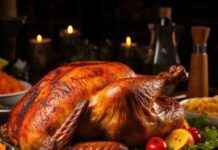A mule is a coin struck using dies that were not intended to be combined.
The 2021 gold ducat, which is part of the long-running series of legal tender coins based upon the originals of the 16th and 17th centuries, was struck with the reverse die that was used for the 2020 coin.
This subtle difference can be discerned by the “naked eye” but is not difficult to see.
According to Arthur Friedberg, a distributor at Coin & Currency Institute, the error was discovered on all 895 examples 2021 gold ducats. (Friedberg also serves as Coin World’s Paper Money Analyst.
The correct reverse is found in the 2021 gold double-ducat issue.
The Royal Dutch Mint will now accurately strike the entire mintage. Customers who ordered the coin can exchange the (possibly rare!) error ducat for a new one or keep the incorrect coin to order the correct one.
The 2021 gold ducats went on sale in May and delivery began in September.
The 2021 design was one of the four last years in which coins explored four international trade routes based on wind directions. This is where the role of the gold ducat was most important.
The 2018 coin featured a design element that pointed north to the Baltics. This is where the grain trade led to huge profits for Dutch traders.
In 2019, the journey was from east to Asia. There, in addition to Batavia (Indonesia), a Dutch trading post in Batavia (Indonesia) was established. The Dutch East India Company also founded several trading posts in many countries. In 2020, the design element pointed south to Africa where many gold resources were discovered.
To commemorate an important anniversary, the correct element of this year’s reverse can be found at left, west. The Geoctrooieerde Westindische Compagnie (or Dutch West India Company) was granted a charter by the Republic of the Seven United Netherlands for a trade monopoly within the Dutch West Indies on June 3, 1621.
It could be found in West Africa, between the Tropic of Cancer (and the Cape of Good Hope), and the Americas including the Pacific Ocean and eastern New Guinea.
It was also involved in the formation of the brief-lived colony in North America (now New Netherlands), which stretched from Maryland to Massachusetts and included New York City.








